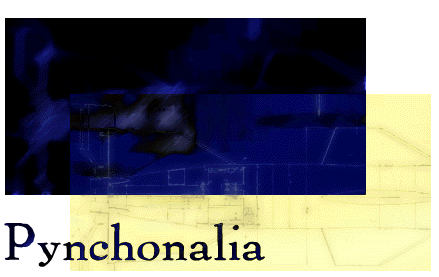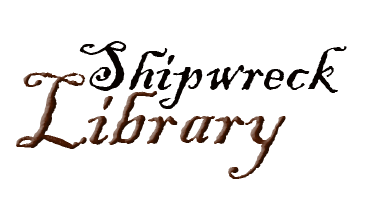Larry Daw’s “Lineland” Review
- At January 12, 2021
- By Spermatikos Logos
- In Pynchon, The Modern Word
 0
0

Lineland: Mortality and Mercy on the Internet’s Pynchon-L@Waste.Org Discussion List
Intangible Assets Manufacturing, 1997.
Review by Dr Larry Daw
In the world of Pynchon scholarship and cultural plurality, Jules Siegel is perhaps best known for his famous article “Who Is Thomas Pynchon . . . And Why Is He Taking Off With My Wife?” (originally published in Playboy, March, 1977). For those of us who missed it during the last 20 years, the article is reprinted in its entirety in his new book, Lineland, although it is not mentioned in the book’s table of “Contents.”
It tells the story of how Siegel’s first wife Chrissie Jolly was involved with perhaps the greatest writer of the late 20th century, Thomas Pynchon. Siegel’s name also emerges from the depths of Pynchonian history, in a character named Cleanth Siegel, from Pynchon’s first short story “Mortality and Mercy in Vienna” Epoch 9, no. 4 (Spring 1959): 195-213, which also accounts for part of Lineland’s subtitle. (Oddly enough, the reference to “Cleanth, Siegel” in the Index to Lineland reverses the normal citation method of listing the last name of a person first and directs us to p. 83 when the name actually appears on p. 84, and also on pp. 147-8.) Such reliance on the past seems to set the tone of the book, which offers a great number of fairly commonplace insights into the workings of the Internet and only contributes a little to what actually amounts to an accumulation of at least 30 years of Pynchon biographical speculation.
It is clearly stated from the outset that Siegel is not an expert in the works of Thomas Pynchon, that he is every bit a newcomer to the Internet who would therefore have difficulty generating any profound insights about its function in postmodernist culture, and that “If you are expecting to read a book about Thomas Pynchon, you are in the wrong place.” Siegel seems to actually relish what e-mailers call “flame wars”—unmitigated gossip-fests with a pronounced vicious tone, even though he says: “I think flaming is infantile bullshit.” He is drawn, therefore, to become a subscriber to the Pynchon mailing-list at Pynchon-L@Waste.org, archived by Andrew Dinn, a place where numerous international dilettantes and scholars feel free to express their insights into Pynchon’s works, their confusion and their inability to tackle his works, and to indulge in some incidental “flaming” of each other.
At the beginning of Lineland, Siegel sets a precedent which is characteristically outrageous. He says: “Gravity’s Rainbow was mildly interesting. I wonder if anyone has commented on what it means.” Surely even the ex-patriate Mr J. Siegel has some inkling that Gravity’s Rainbow has generated a vast amount of scholarship for a quarter of a century, and still continues to do so! To make things worse, Siegel then goes on to make a banal comparison between the rainbow and gravity—surely one of the most prominent geometric metaphors of the novel. He may also show a lack of knowledge about current theories in particle-physics. Gravitons, anyone?!
Later, Siegel again admits to “having only skimmed parts of Gravity’s Rainbow.” This means that he has neglected both Mason & Dixon, the current Pynchon opus, and also the often-neglected Vineland. (We can only wonder how he created the clever pun in the main title of his book!) The purpose of Lineland is stated as follows: “I am really trying to give the Pynchon list a picture of the time and the influences as I saw them. I have no idea how Tom [Pynchon] saw them.” Solipsistic may be too kind a word to describe this admission in a book directed to the Pynchon mailing list, but at least Siegel is self-deprecating about his extended theoretical piece about “The White Goddess”: “you will get yourself laughed off stage at any conventional academic symposium for saying this.” Yet, Siegel feels quite confident in summarizing the methodology of Thomas Pynchon as follows: “I think you have to accept the fact that Tom’s grasp of things that he glibly sets down as if he were a master of the material is usually quite superficial, based on reading anything from, say, Bible Comics to learned journals. This is not a criticism, but a description.” He also recounts the well-worn apocryphal story about how Pynchon wrote Gravity’s Rainbow while stoned!
The sheer confidence of these statements from a man whose entire knowledge of Pynchon’s work is self-described as circumspect, and who has apparently not kept up with the on-going developments in critical theory, clearly shows that Jules Siegel is relatively immune to irony. Still, it may explain the caustic comments made by a flabbergasted Siegel bugbear named Chris Stolz: “Siegel, you are truly a pompous self-serving arse. It is good to have a whiff of narcissism on an otherwise thoughtful list. Do you have any claim to fame, or even listenability, other than having had Pynchon bonk your wife way back when?” Jeff Meikle is also forced to ask “who is Jules Siegel and why did he take of with my [Pynchon mailing] list?” After Siegel makes another claim which entirely neglects the cruel coercion involved with a waif-like Gravity’s Rainbow character’s role, “Bianca, obviously, is based on Chrissie, who acted like an eight-year-old with strangers,” we might go on to ask honestly if Jules reads his books very carefully.
The most entertaining parts of Lineland deal with Siegel’s early years, but they go on for far too long. We also have to demand proof for his claim that Mario Puzo based his Godfather character on Siegel’s stories about his own father, and that he provided Pynchon with sufficient material for him to invent his sinister SHOCK and SHROUD characters in V. Quite simply put, large parts of Lineland are self-serving and narcissistic in the extreme. Examples of this would certainly be as follows: pp. 131-132, Siegel’s “Report Cards” on various contributors to the Pynchon list, as if he is in any real position to judge them; Siegel, the latecomer to cyberspace, advising others to “unsubscribe” from the list; and continuous outrageous statements on Siegel’s part, such as “I’m sorry I don’t suffer fools gladly.” Unfortunately, the wholly extraneous FAQ in the “Appendix” of the book, inspired, no doubt, by various FAQ sites Siegel has encountered as a fledgling Net surfer, do not entirely redeem or substantiate his claims.
Neither does his light, rather naive essay “Epilogue: The Future of the Book of the Future.” Siegel’s comments about the significance of desktop publishing in an age of “Shocked” Internet sites, Pentium multi-media home computer systems, cheap colour flat-bed scanners, etc., etc., are, frankly, boring, and certainly not immune to his constant propensity for self-aggrandizement: “Now what about people like me, who combine all these [artistic] skills to create the most humble and significant art of our time [advertising]?”
By the far the most questionable of Siegel’s “theories” is his actual concept of an electronic “Book of the Future”: “one not very far-out idea: a three-dimensional book in the form of a displayable hologram, with pages that turn and have depth as well as movement. Add the dimension of time and interactivity and this book begins to take on the characteristics of a living being, lacking self-consciousness.” Uh, Jules: we already have three-dimensional books which have depth and pages that can be turned within the dimension of time, thereby granting “interactivity,” in at least one sense, with the text! Yet, undoubtedly, the very concreteness which allows books to occupy dimensions other than time has in no way granted them “the characteristics of a living being.”
Lineland is definitely an ambitious, if wholly unfocussed book, and it may set a valuable precedent for other “Internet books” which will follow. The best part, by far, is “Part 4. What did Lolita Say About Humbert?” Here, interesting tidbits of information are provided by very real people who obviously have interesting lives and who are personable in a 60-ish sort of way. Ultimately, Lineland might best be summarized in a comment made by Don Larsson, a subscriber to the Pynchon-L@Waste.org discussion list: “When Siegel and others aren’t busy ranting at each other, an interesting point emerges from time to time.”
Author: Dr Larry Daw
Date Posted: 1 May 2000
Back to: Unique Pynchonalia
Main Pynchon Page: Spermatikos Logos
Contact: quail(at)shipwrecklibrary(dot)com
Date Posted: 1 May 2000
Back to: Unique Pynchonalia
Main Pynchon Page: Spermatikos Logos
Contact: quail(at)shipwrecklibrary(dot)com

